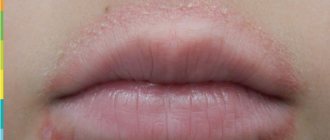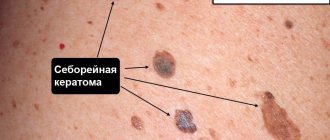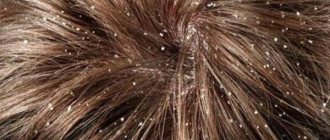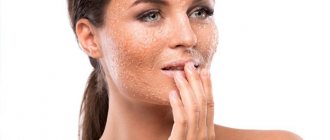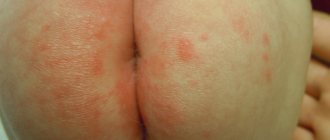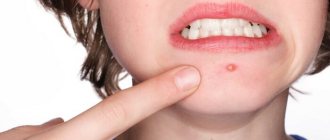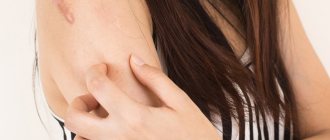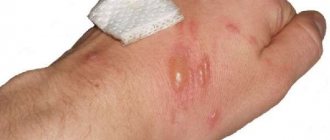Cracks in the corners of the mouth are the main symptom of angulitis. This is a disease of the mucous membrane and skin that develops under the influence of streptococci or yeast-like fungi. Diabetes mellitus, problems with bite, lack of vitamin B2 and even long-term antibiotic therapy also contribute to the occurrence of cracks. Why is the skin in the corners of the mouth prone to cracking, how to neutralize and prevent the development of the process in the future?
General characteristics of the condition
Painful cracks around the mouth are colloquially called jams. Zaeda is one of the forms of stomatitis (damage to the oral mucosa) caused by streptococci or yeast-like fungi of the genus Candida. In some cases, doctors diagnose mixed infection (angular stomatitis).
The following angulitis are distinguished: allergic (when using lipstick or other cosmetics), microbial (streptococcal, candidiasis, etc.) and post-traumatic (postoperative, post-manipulation, etc.). Microbial angulitis most often occurs in patients with diabetes mellitus (streptococcal) or in HIV-infected people (candidomycosis). Microbial angulitis in children can occur due to intestinal dysbiosis, vitamin deficiency, decreased immunity and other diseases. Post-traumatic (postoperative) angulitis is cracks in the skin and mucous membranes (linear tears in the skin or mucous membrane) in the area of the corner of the mouth, resulting from excessive (excessive) stretching after intraoral surgical dental operations (removal of dystopic or impacted wisdom teeth) or manipulations associated with treatment of wisdom teeth. Almost after every removal of an impacted or dystopic wisdom tooth, maxillary sinusotomy or other surgical interventions that require wide opening of the mouth, damage (by stretching) to the surface layers of the skin and mucous membrane in the area of the corner of the mouth occurs, i.e. post-traumatic (postoperative) angulitis.
Morphological features
Streptococcal angulitis most often develops in patients of the younger age category. First, a small bubble appears in the corners of the mouth, covered with a thin film. Later, erosion forms at the site of the bubble, covered with a crust of congealed blood and purulent masses. When the blister is opened, moist red skin with traces of minor bleeding is exposed. You can often find a crack in the center of the bubble. Approximately 1-2 hours after opening, the skin again becomes covered with a dense crust.
Content:
- General characteristics of the condition
- Possible reasons for development
- Features of therapy and prevention
Streptococcal infection of the mucous membrane is accompanied by discomfort and pain when opening the mouth.
Seizures of fungal origin are slightly different from streptococcal ones. Initially, a varnish-red erosion forms on the mucosa, surrounded by an additional layer of epithelium. Sometimes erosion is covered with a grayish coating. A specific crust does not form in case of candidiasis angulitis. Most often, the crack is masked by an overhanging skin fold and has a chronic, relapsing course.
Types of angulite
Considering the etiology, seizures can be primary and secondary. In turn, the primary ones are divided into: streptococcal, viral and candidiasis.
Viral seizures. They are caused by a viral infection (herpes virus). In this case, a doctor will help you choose an ointment for sticking in the corners of an adult’s lips.
Streptococcal seizures are caused by streptococcal infection. A characteristic manifestation is the formation of a yellowish-red crust.
Candidiasis angulitis. The cause is a fungal infection. This type is characterized by a chronic course and the absence of a crust.
Possible reasons for development
The appearance of a jam indicates not only infection or internal pathological processes, but also the bad habits of the person himself. Regularly licking your lips is a ritual that some people find extremely difficult to break. It is important to understand that regular exposure to saliva, which contains billions of bacteria, has a detrimental effect on the mucous membranes. If a crack has already formed, licking the lips interferes with regeneration and further fuels the infection.
Neglecting the rules of personal hygiene is also fraught with the development of cracks in the corners of the mouth. Possible causes include: microtraumas, lack of cleansing, dirt on the skin.
Eating in childhood most often indicates iron deficiency anemia. Therefore, all pediatricians advise immediately taking a blood test for iron, and not sinning on problems with the baby’s hygiene. The main thing is not to try to correct anemia on your own. Introducing meat and pomegranates in large quantities into the diet can only maintain the existing iron level, but not increase it. Noticed symptoms of anemia? Go to the doctor and undergo a comprehensive therapeutic course.
Cracks in the corners of the mouth can also be a symptom of:
- vitamin B2 deficiency;
- malocclusion;
- missing teeth or incorrectly selected dentures;
- allergic lesions of the oral cavity;
- caries;
- metabolic disorders;
- long-term treatment with strong medications.
What you need to know about chronic recurrent binge eating?
In some cases, therapy gives a short-term effect or does not affect the condition of cracks in the corners of the mouth at all. For frequently recurring seizures, the doctor must conduct a comprehensive diagnosis of the body, identify and eliminate the root cause. What diseases can chronic angulitis indicate?
- HIV. A weakened body becomes easy prey for pathogenic microbes. Most often, cracks cannot be treated, and the surrounding skin becomes covered with a white coating, becomes dry and inflamed.
- Tuberculosis, chronic infectious pathologies. Microtraumas occur due to fungus or mixed flora. Often, recurrent seizures are accompanied by increased night sweats and sudden changes in body temperature.
- Intestinal diseases. Failure of the functionality of the gastrointestinal tract is always associated with disruption of metabolic processes. Intestinal diseases impair the absorption of nutrients, including iron and B vitamins. The lack of these nutrients provokes a decrease in the protective function of the mucous membrane and the development of cracks.
- Diabetes. In diabetes mellitus, an imbalance of mucosal microorganisms occurs. Moreover, by-products of impaired glucose metabolism accumulate in tissues. The result is microtrauma of tissue with a characteristic white coating, which is hidden behind skin folds.
- Oncological diseases. Cancer suppresses the body's protective functions and consumes the lion's share of nutrients, which can lead to a lack of micro- and macroelements and anemia. Recurrent seizures may well be a symptom of a tumor in the oral cavity or gastrointestinal tract.
How to prevent your lip from cracking in the middle?
- Make it a rule before you go outside to lubricate the skin of your lips with special protective products (lipstick, balm, etc.) - this way you will moisturize your lips and protect them from drying out. Periodically apply vegetable oils or propolis to your lips.
Lubricate
- Don’t forget about vitamins : natural, found in seasonal vegetables and fruits, and as part of vitamin complexes purchased in pharmacies.
- Apply masks before bed, which, once absorbed, will prevent cracking on frosty days.
- Smoking really dries out your lips, especially if it happens outdoors, combined with exposure to wind or sunlight. Alcohol does not have a better effect on the skin of the lips .
- Poor quality or expired cosmetics can cause great harm. And you shouldn’t borrow lipstick from a friend - this is a purely individual product, like a toothbrush or comb.
Maybe from low-quality cosmetics
- If you notice that your lip is cracked in the middle , this happens often, and it takes a long time to heal - consult a specialist and strictly follow the procedures recommended by him.
Features of therapy and prevention
Best materials of the month
- Coronaviruses: SARS-CoV-2 (COVID-19)
- Antibiotics for the prevention and treatment of COVID-19: how effective are they?
- The most common "office" diseases
- Does vodka kill coronavirus?
- How to stay alive on our roads?
Therapy is based on eliminating the root cause of the seizure, but there are also general recommendations for caring for the affected skin. If the cracks are streptococcal in nature, ointments with antibiotics are additionally administered, and if they are fungal, ointments with an antifungal effect are administered. The skin around the crack must be regularly treated with disinfectant solutions to avoid re-development of the source of infection. After eliminating the root cause, therapy continues for another 7-10 days until the skin is completely restored.
Depending on the root cause of angulitis, the course of treatment may include the use of antibiotics, B vitamins or paraffin-based ointments. In most cases, the prognosis is favorable. The main thing is not to self-medicate, consult a doctor in a timely manner and follow all necessary recommendations.
Causes of wrinkles around the mouth
Factors that accelerate the appearance of wrinkles around the mouth include the following:
- irreversible and inevitable age-related changes;
- hereditary predisposition to early formation of wrinkles;
- smoking and other bad habits;
- poor selection of pillows, incorrect body position during sleep;
- improper skin care or its complete absence;
- sun, cold, wind and other environmental factors;
- sudden weight loss;
- diseases of internal organs;
- lack of teeth;
- imbalance in nutrition, drinking regime and sleep regime;
Prices for services
3D - modeling
| |
| Voluma 1 ml | 17 300 |
| Voluma 2 ml | 31 500 |
| Radiesse 0.3 ml | 10 200 |
| Radiesse 0.8 ml | 17 500 |
| Radiesse 1.5 ml | 21 300 |
| Radiesse 3 ml | 36 200 |
| Botulinum toxins | |
| Botox for 1 unit. | 360 |
| Xeomin for 1 unit | 300 |
| Dysport 1 unit | 120 |
Contour plastic
| |
| Belotero Soft | 13 200 |
| Novacutan Medium | 13 200 |
| REVANESSE Redexis, 1 ml | 16 200 |
| REVANESSE Kiss, 1 ml | 15 700 |
| REVANESSE Contour, 1 ml | 15 700 |
| REVANESSE Contour, 2 ml | 28 700 |
| REVANESSE ULTRA | 14 700 |
| SD24XP | 14 100 |
| SD30XP | 15 100 |
| Artfiller Fine Lines, 1.2 ml | 14 800 |
| Artfiller Lips, 1.2 ml | 16 200 |
| Artfiller Universal, 1.2 ml | 16 200 |
| Art filler Voluma, 1.2 ml | 17 500 |
| Apriline FORTE, 1 ml | 14 800 |
| Apriline NORMAL, 1 ml | 14 400 |
| Juvederm 3, 1 ml | 15 700 |
| Juvederm 4, 1 ml | 17 100 |
| Juvederm smile | 14 100 |
| Juvederm Ultra No. 2 | 11 600 |
| Juvederm Volbella | 17 300 |
| Juvederm Volift | 17 300 |
| Juvederm Volift RETOUCH | 14 700 |
| FILORGA M-NA18 | 11 500 |
| FILORGA X-NA | 15 500 |
| FILORGA X-NAZ | 14 700 |
| FILORGA Voluma, 2ml | 28 700 |
| Estefil 200 mg | 36 000 |
| Nitiya, 70 mg | 20 000 |
| Cannula | 1000 |
| Connector | 400 |
| Application anesthesia | 500 |
Prices and promotions posted on the website are not a public offer. Prices are indicated taking into account payment within 5 days from the date of the initial consultation. The exact cost of treatment is determined after consultation and diagnosis.
Sign up
How to remove wrinkles around the mouth?
Both traditional and modern medicine help remove wrinkles around the mouth. In both cases, there are a lot of tools and techniques. The choice is yours. However, it is better to start the fight with a visit to a cosmetologist. Just so as not to harm yourself and choose the “optimal route”.
Traditional medicine offers a variety of masks from available materials that can be made at home. This is often a troublesome matter, but financially this option is certainly optimal. Unfortunately, such procedures give good results in the prevention mode or at the initial stage of wrinkle formation.
You can do facial exercises at home. This work requires iron self-discipline and is also good as long as there are no deep wrinkles.
There are many anti-wrinkle creams on the market that you can use yourself. The right choice is a delicate matter, it is better to make it together with a professional.
In cases of serious problems, the help of aesthetic medicine and, in extreme cases, surgery will inevitably be required.
The cosmetologist will offer treatments that are right for your skin. It could be:
- peeling,
- laser peeling,
- botox,
- biorevitalization,
- face lift,
- mesotherapy.

